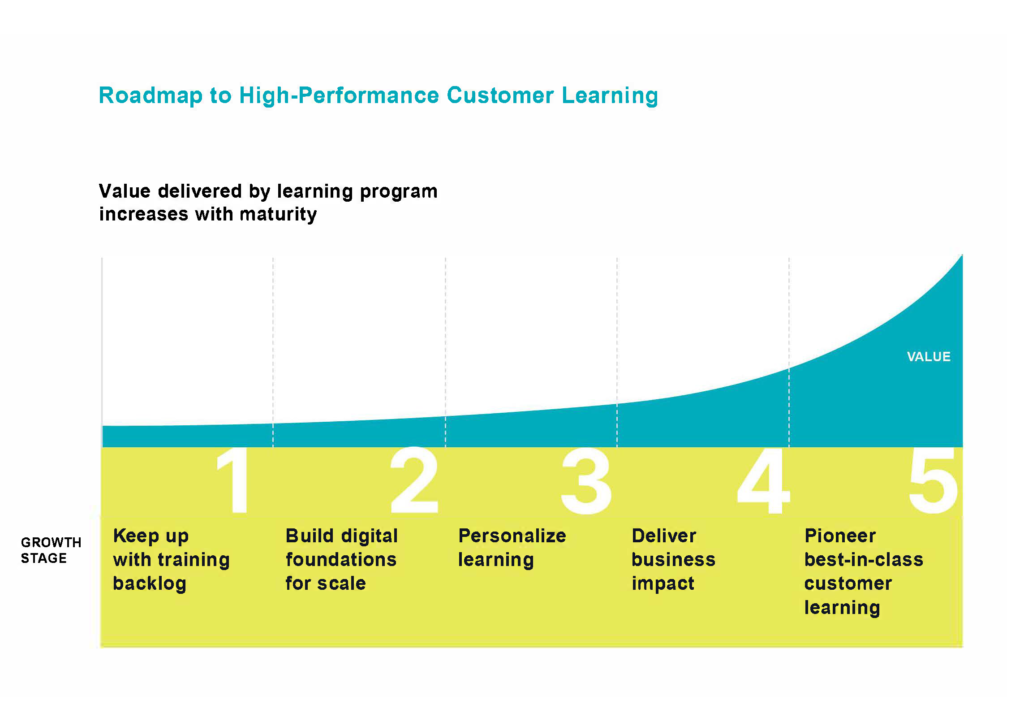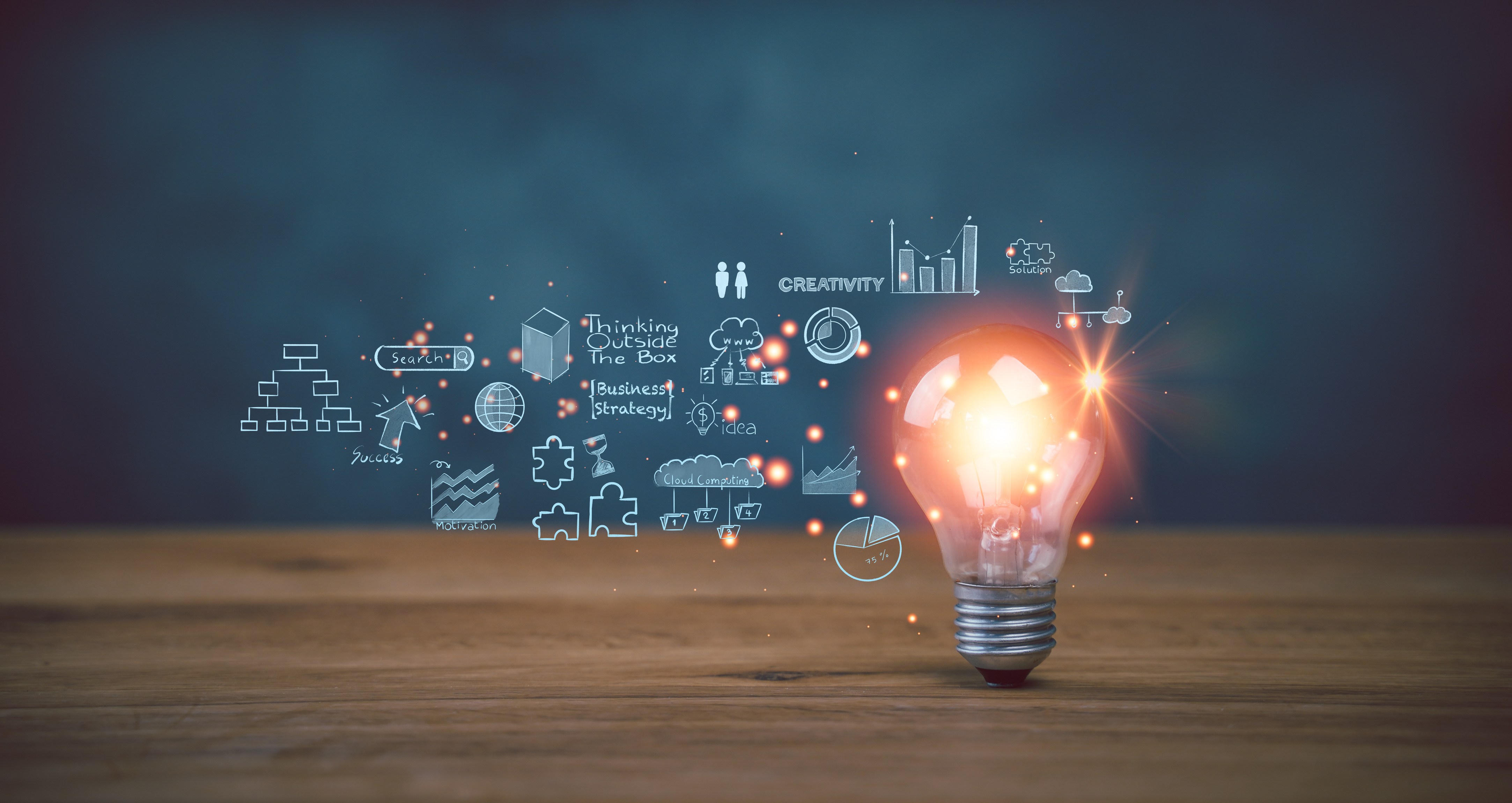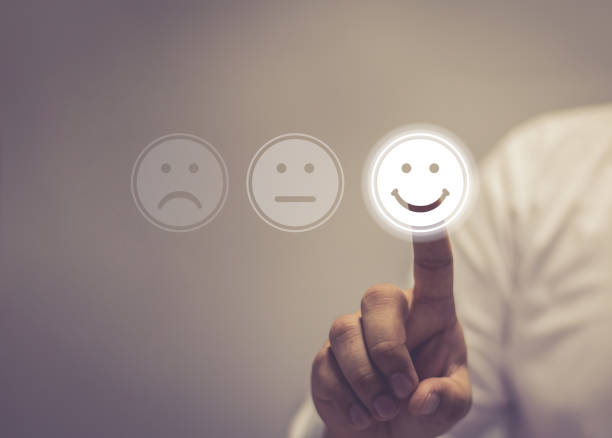At Thought Industries, our extensive experience with clients and partners has shown us a wide range of customer learning program strategies; among the strongest we’ve come across are programs that are focused on defining their competitive advantage, like personalizing learning experiences at scale, achieving better retention rates, or freeing up success and support teams to operate strategically. Others, meanwhile, struggle to keep up with their backlog of digital content, drive learner engagement, deploy the right tech stack, or ultimately make their mark. To better understand the factors that push some programs forward, as well as the barriers that hold other programs back, we launched a research initiative to isolate the practices and lessons that allow programs to raise their performance across the bar.
So, why do some customer learning programs excel, while others are stuck in immaturity?
To answer this question, our research team interviewed customer learning professionals and leaders from a cohort of 35 organizations in 2021. What we found was a distinct set of five stages from first steps to maturity, four near-universal barriers on the way there, four mindsets that distinguished the highest performing leaders from others, as well as dozens of best practices to overcome challenges along the way. All of these findings are documented in our newest whitepaper, “The Thought Industries Maturity Model: How Great Customer Learning Programs Create Value,” which we unveiled to our partners and the customer learning market at Thought Industries’ 2021 COGNITION event, our annual series of virtual webinars and workshops designed for customer learning decision-makers.
It was critical for our research team to not only answer for what mature, successful programs are doing, but exactly how they’re doing it, and how they got there over time. We aimed to produce a roadmap that would not only enable our customers to leverage the Thought Industries platform in new strategic efforts, but also set up the larger market for success and provide them with a greater understanding of their own customer learning operations – to ultimately drive the success of the customer education function on a larger scale.

What’s critical when understanding this maturity model is that every phase is a great place to be, and each has its own benefits – however, as any program grows and matures, new strategies and vision for the future are required.
- Stage 1 is where the bulk of customer learning is delivered live; either via Instructor-Led Training (ILT), or more recently, Virtual Instructor-Led Training (VILT). And, this stage is not monopolized by smaller organizations – even enterprise-level companies tend to start here before they grow their customer learning programs.
- Stage 2 stems from the realization that an all-live training offering simply won’t scale with the business. This is where a foundation for digital, scalable learning is created, and most often, this is when organizations invest in e-Learning and on-demand content.
- Stage 3 is where that digital training offering becomes more strategic and personalized to your customers. For many organizations we interviewed, it meant mapping the most critical handful of personas, and digging deeper into what their ideal learning offering would look like. And, at this stage, many organizations begin to measure the impact of their learning through dashboards and metrics.
- At Stage 4, the learning function is focused on impacting multiple significant business metrics across the customer journey. In essence, the measurement focus has shifted from, “how does this program affect my learner?” to “how does it impact the business?” The strongest leaders in this category have an ongoing source of impact metrics that they can present to the C-suite on a regular basis.
- Stage 5 is, simply put, the future. Through technology and innovation, this is where customer learning starts to push the boundary of what a learning experience can be. And, at this stage, learning doesn’t stop with customers, but is launched on a larger scale, toward the market.
However, these 5 stages weren’t the whole picture. Each organization we interviewed also cited many near-universal obstacles that arose in the transition from one stage to another; the problems and challenges they were faced with that incited a whole new strategy. And, most importantly, they shared their solutions, too – we collected 15 of the most compelling tactics to level up a customer learning program and achieve a new stage of maturity. Details on the barriers between each phase, as well as that set of program tactics can be found in our whitepaper on How Great Customer Learning Programs Deliver Value – download it now to set course for your program toward maturity and excellence.
If you’re interested in a personalized consultation on your own organization’s maturity and how you can level up, send us a message at [email protected]. And, to read more about COGNITION 2021 or rewatch this session from the event, please visit the Thought Industries COGNITION homepage.



